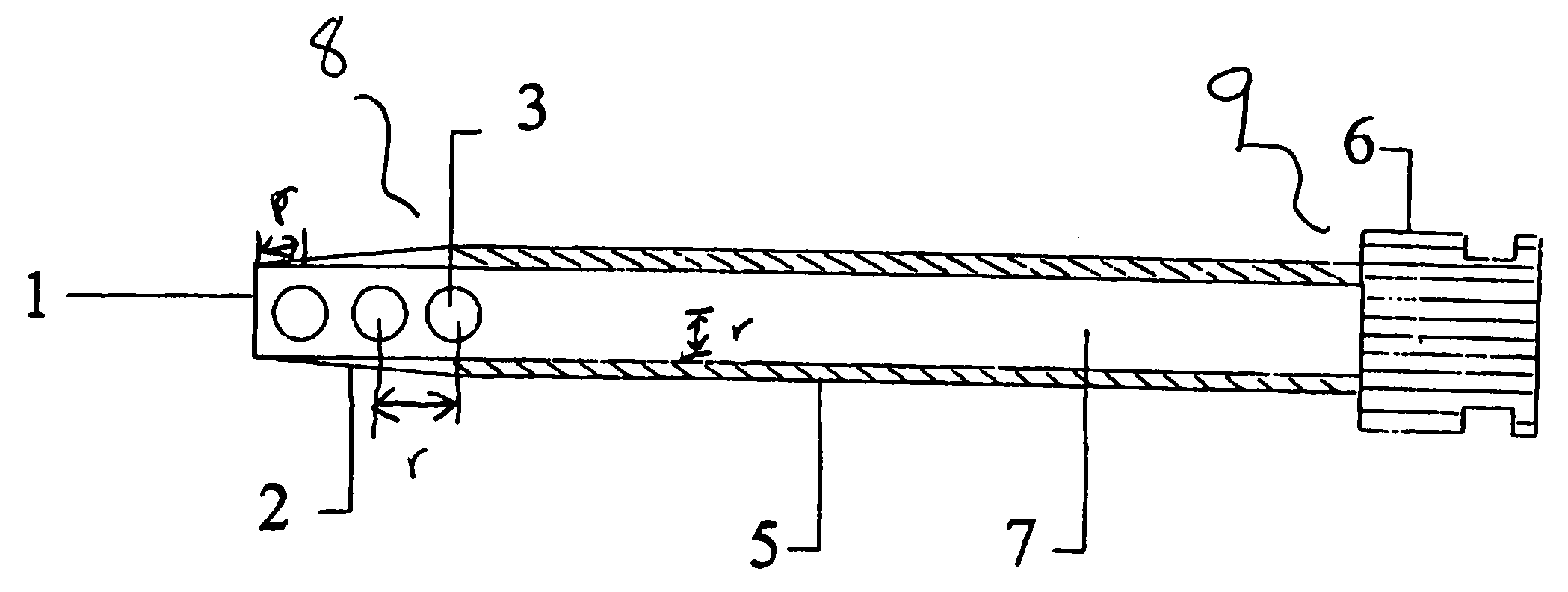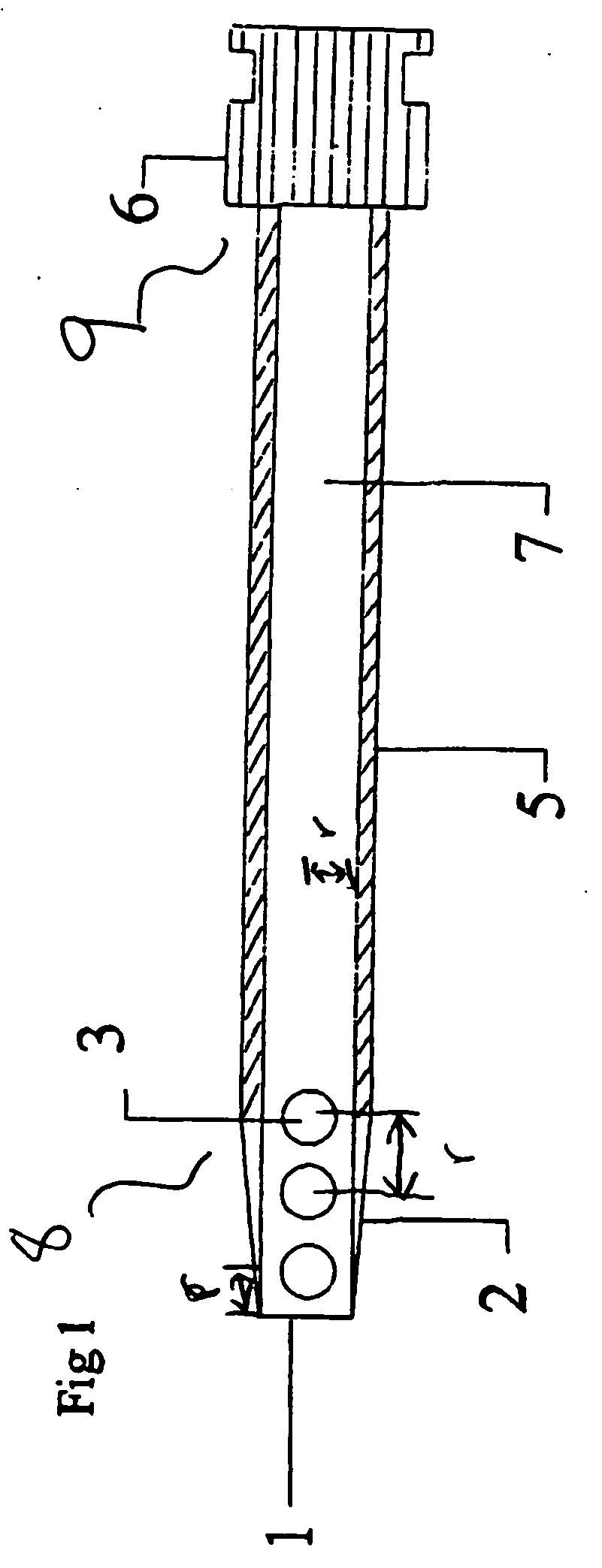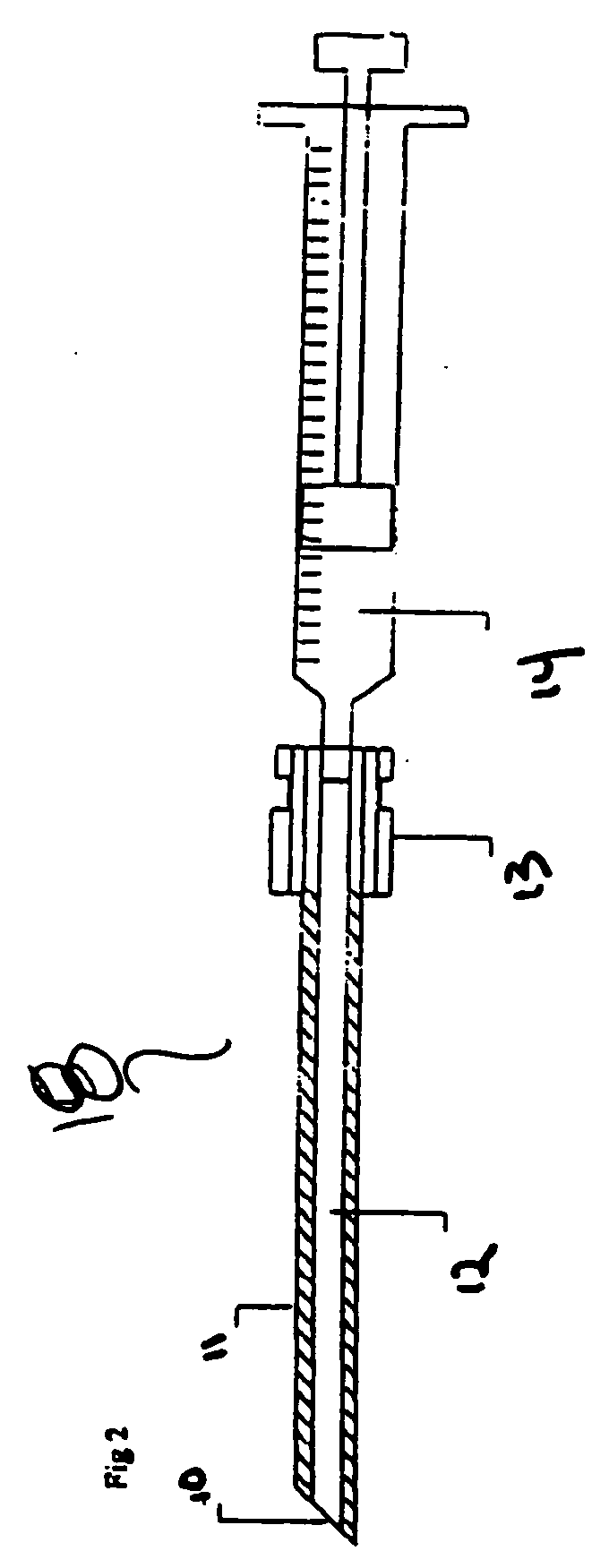Percutaneous diagnostic and therapeutic hematoma drain
a technology of hematoma and percutaneous drainage, applied in the field of medical devices, can solve the problems of affecting the treatment effect of patients, affecting the treatment effect, and increasing the potential for hematoma, so as to prevent complications from occurring
- Summary
- Abstract
- Description
- Claims
- Application Information
AI Technical Summary
Benefits of technology
Problems solved by technology
Method used
Image
Examples
Embodiment Construction
[0021] Reference will now be made in detail to the present exemplary embodiments of the invention, examples of which are illustrated in the accompanying drawings.
[0022] The hematoma drain according to the invention is an “early warning” percutaneously-placed drainage device designed as a diagnostic measure to alert the staff that hemostasis (i.e., the stoppage of bleeding or hemorrhage) might not be secure, and if a bleed does occur, it will evacuate blood before a hematoma forms and will help prevent greater complications. In addition, use of the hematoma drain will permit secondary procedures to occur earlier and will limit some occasional compression syndromes which might occur after the drain has been removed. The drain will be expected to become active only after the sheath is removed, however the drain may be active while the sheath is still in place. Typically, the period of use of the hematoma drain may vary between 1 and 3 hours before the sheath is pulled.
[0023] At the c...
PUM
 Login to View More
Login to View More Abstract
Description
Claims
Application Information
 Login to View More
Login to View More - R&D
- Intellectual Property
- Life Sciences
- Materials
- Tech Scout
- Unparalleled Data Quality
- Higher Quality Content
- 60% Fewer Hallucinations
Browse by: Latest US Patents, China's latest patents, Technical Efficacy Thesaurus, Application Domain, Technology Topic, Popular Technical Reports.
© 2025 PatSnap. All rights reserved.Legal|Privacy policy|Modern Slavery Act Transparency Statement|Sitemap|About US| Contact US: help@patsnap.com



